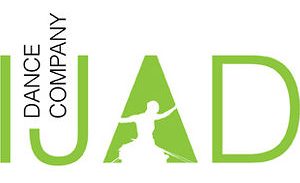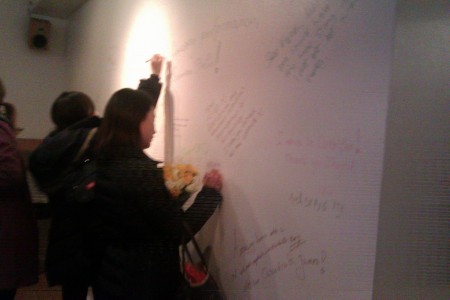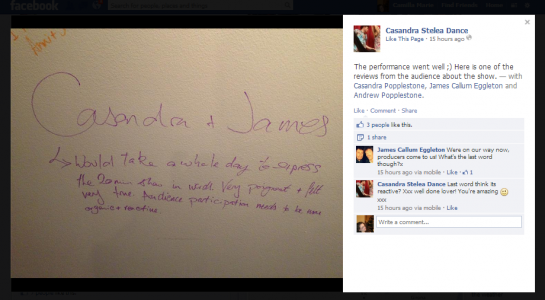Feed Me!
Feedback is nice. Dreaded, sometimes, but always good to have.
I prefer the word ‘feedback’ to ‘review’ or ‘critique’ because it connotes a two-way partnership between the audience and performer. The dancer feeds you with their art, you feed them back with your opinions.
Because you do have them.
Somewhere in history – perhaps even instinctively – we started feeling there was a right and a wrong response to art. Shakespeare wrote knowing he had to appeal to a diverse audience in one show – and if the groundlings didn’t like it, they would heckle, throw things and perhaps brawl out of boredom. The seated, richer classes would just chat amongst themselves and ignore you if your Falstaff faltered or fell flat.
We go to see performances because they make us feel or think differently. And we go because we like to share those responses. When was the last time you went on your own?
So why are we comfortable keeping these ideas to ourselves? Speak to any type of artist of any discipline (like cooking) and they’ll want to know what you think, but we feel awkward if we don’t give it 5 stars. We think that the fault was ours or we just don’t like sharing a negative opinion. We’re so British!
This is why the new Feedback Wall at The Place is great. During the interval and at the end of the show you can literally take a pen and write what you think. No awkward hands-up Q&A.
This was my experience on the 29th and it worked brilliantly. I must admit I was a bit confused at first. I didn’t think they actually meant the wall. I was looking for some type of board and there was no sign of anyone writing anything so I sipped my lemon tea instead.
What was I waiting for?
Permission. Even those who work in the arts feel that unsolicited opinions are unwelcome. At the end of the show the concept was pretty clear (they were wipe-pens) so away I scrawled.
Were any of the comments meaningful or helpful? You’ll have to ask The Place, but looking at dancer Casandra Stelea’s Facebook page, I could see that she appreciated it.
This brings us on to social media. Whatever you buy these days, there are reams of reviews, although for performance it is rare to find (easily!) an audience review.
The Place has embraced social media (it’s hard to miss the encouragement at the bar, on the programme and before the show) and this should be the home of feedback.
It takes away the awkwardness and allows for genuine responses. This allows the performers to respond and create more meaningful artwork.
What’s more interesting is that it is live – like theatre. Instead of replacing that unique quality of physical attendance that the digital sometimes threatens, it opens a discussion in real time – if everyone is unified with one time and one hashtag after the show. It encourages people to attend so they can join in because guess what? You can’t download it and catch up on your way to work.
How great is that? We’re creating a unique experience upon which it is not possible to compromise. If you want to try out this new type of response come to In-Finite on March 8th.
We look forward to @ing you there 🙂




 Led by Artistic Director, Joumana Mourad, the In-Finite project explores the different realities of the physical and virtual platforms.
Led by Artistic Director, Joumana Mourad, the In-Finite project explores the different realities of the physical and virtual platforms.